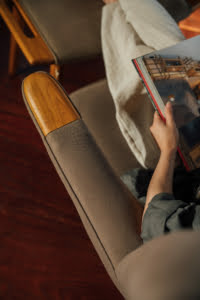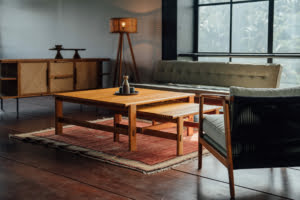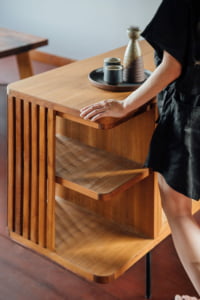Unalome Interior’s Take on Design.
The What, The How, The Why.
“Interior Design.”
These two words evoke so many different things in our mind;
homemaking, living space, decoration, furniture, house, and shopping.
It can be a daunting task, to fill the space where you call home with furnishings.
It could be anything from getting familiar with the colour wheel to thinking of what material could make the longest lifespan for the furniture you choose.
Let’s start with the basics. What is interior design?
Interior: the inside or inner parts. Design: the Latin word designare means “to draw a plan”.
Design is a plan or form or outline to be executed to serve a purpose. When we think of interior design, we begin with thinking of drawing up a plan for the purpose of making yourself and your family comfortable in the space where you live your day-to-day lives.
We start with the basics and build our way up in small milestones. One corner at a time, one room at a time. We think of the functionality of furniture, space planning, and how each piece can be cohesive and aesthetically pleasing for residential homes and businesses.
The common design world tells us there are twelve principles of design:
contrast, balance, emphasis, proportion, hierarchy, repetition, rhythm, pattern, white space, movement, variety, and unity.
Instead of hitting all twelve aspects at once, we suggest you start with the main or basic three for your space:
First – style. Second – the focal point. Third – balance.
Begin with brainstorming to find inspiration for the large brushstrokes of how you want to style, whether it be traditional or modern, contemporary, industrial or minimalist, Bohemian or Baroque, glamorous or farmhouse or chic. By looking at all these different styles you can then discover your personal preferences and what suits you.
Start with one piece of a focal point, something interesting, eye-catching, and strong enough to anchor everything else for each room, and expand from there. Make sure as you go, balance is kept. The weight between furniture and pieces should be evenly distributed.
Think of a spectrum that you want to stay in the middle of or a seesaw you want to keep balanced. Between scale (large or small), texture (sturdy or soft) and positioning (high, eye-level, low, or left and right placement), and density (furnished and negative space).
If you can achieve the basic three to begin with, you’ll create spaces that feel complete and it should create the capacity of comfort for the inhabitants.
When you begin, know that you have two distinct things to think of: interior design and interior decoration.
The first focuses on the big picture. It is being aware of people, and their behaviour to optimise function. It is the abstract: function, technicality, balance, light, weight, and perspective.
The latter focuses on the smaller, more intricate details: the aesthetics, adorning the place with more delicate elements. It is the concrete: patterns, type, colour, and texture.
There is no right or wrong when it comes to figuring out what works best for you.
“Why?” is a good question to ask frequently during the process.
Why do you need or want this?
Why is this a good choice?
Discover yourself and your taste in the pieces and furniture you find pleasing and beautiful.
The only true advice we leave you with is this:
Make the design your own and don’t be afraid of changing things up as you go.



